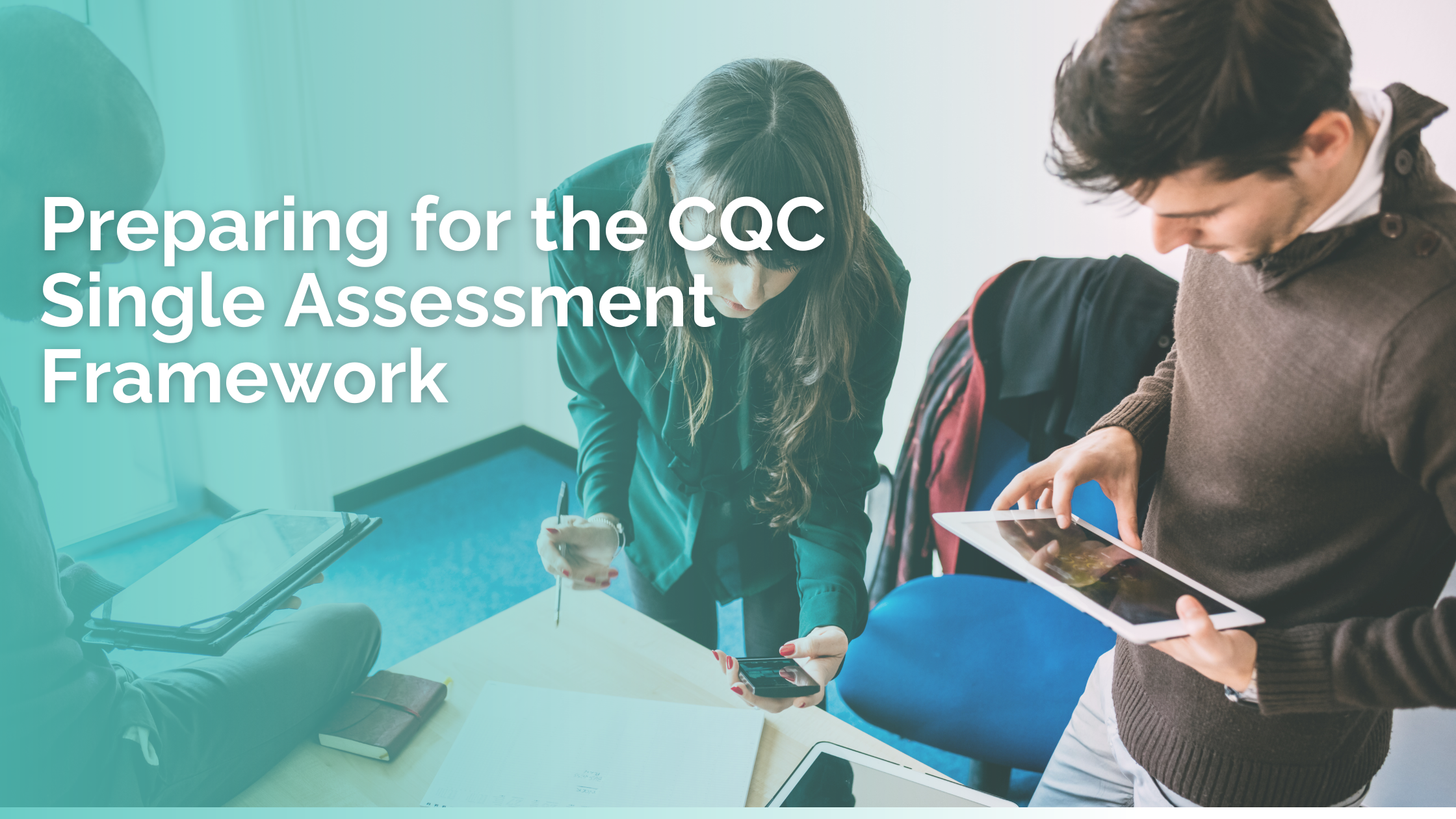Understanding the Single Assessment Framework (SAF)
The Single Assessment Framework (SAF) has brought significant changes to the way GP practices are inspected. Designed to provide a clear and comprehensive view of care quality and operational standards, the SAF is structured around key elements that practices must understand and adhere to.
Key Changes Introduced by the SAF
34 Quality Statements
The SAF framework is built around 34 Quality Statements, articulated through “We and I” statements. These Quality Statements set clear expectations for care quality and operational standards that GP practices are expected to meet.
Six Evidence Categories
To inspect how GP Practices are meeting the Quality Statements, the SAF employs six categories of evidence, marking a shift from traditional onsite inspections to a broader evaluation. This approach includes feedback from staff, patients, and partners and make up 50% of how CQC will assess/inspect your GP Practice. The six evidence categories are:
-
- People’s experiences
-
- Feedback from staff and leaders
-
- Observations of care
-
- Feedback from partners
-
- Processes
-
- Outcomes of care
Focus on High Priority Quality Statements
Certain quality statements, especially those with national or regional impact, are prioritized as part of the planned assessment schedule. Currently, the CQC emphasises the Responsive Key Question and the Equity of Access Quality Statement. These areas are crucial for assessing how practices respond to patient needs and ensure equal access to services.
Effective SAF Preparation
Aligning with Quality Statements
Start by closely reviewing how your GP practice aligns with the SAF’s Quality Statements.
Our CQC digital tool, Pathfinder offers up to date “We and I” statements with specific prompts that can guide your evidence collection effectively. Pathfinder helps you gather and organise the necessary documentation and feedback, ensuring a comprehensive overview of your practice’s compliance with each statement.
Obtaining External Feedback
In addition to self-assessment, obtaining external feedback can provide a more rounded view of your practice’s performance. DKJ’s mock inspection services gather feedback from staff, patients, and partners, offering insights into areas that might need attention. This helps build a baseline understanding of how these key groups view your services.
Organised Evidence Storage
Pathfinder allows for the organised storage of evidence related to the SAF quality statements. By keeping everything from quantitative data to qualitative feedback in one place, you can be assured that you are CQC SAF ready!
Identifying and Acting on Improvement Areas
Benchmarking Performance
Understanding where your practice currently stands is crucial, but so is identifying areas for improvement. Pathfinder can help highlight focus areas by comparing your practice’s performance against benchmarks. This comparison aids in prioritizing which aspects to address first for the most significant impact.
Prioritising Actions
Using Pathfinder’s RAG (Red, Amber, Green) action plan feature allows for clear prioritization of areas needing immediate attention versus those already meeting standards. This ensures focused and efficient improvement efforts.
Targeted Improvement Strategies
DKJ’s services can complement this by providing a plan based on the assessment’s findings. DKJ’s approach uses data collected during the assessment phase to develop a targeted strategy for improvement. Whether addressing specific feedback from the mock inspections or enhancing particular aspects of your practice’s operations, the goal is to make focused improvements.
Embracing Continuous Improvement
The SAF inspection represents an opportunity for continuous improvement and excellence in patient care. By understanding the key changes introduced by the SAF and employing both internal assessments and external support, your practice is well-equipped to navigate the inspection process confidently.
This approach showcases a commitment to upholding the highest standards of care, ensuring that your practice not only meets but exceeds the expectations set by the SAF.
